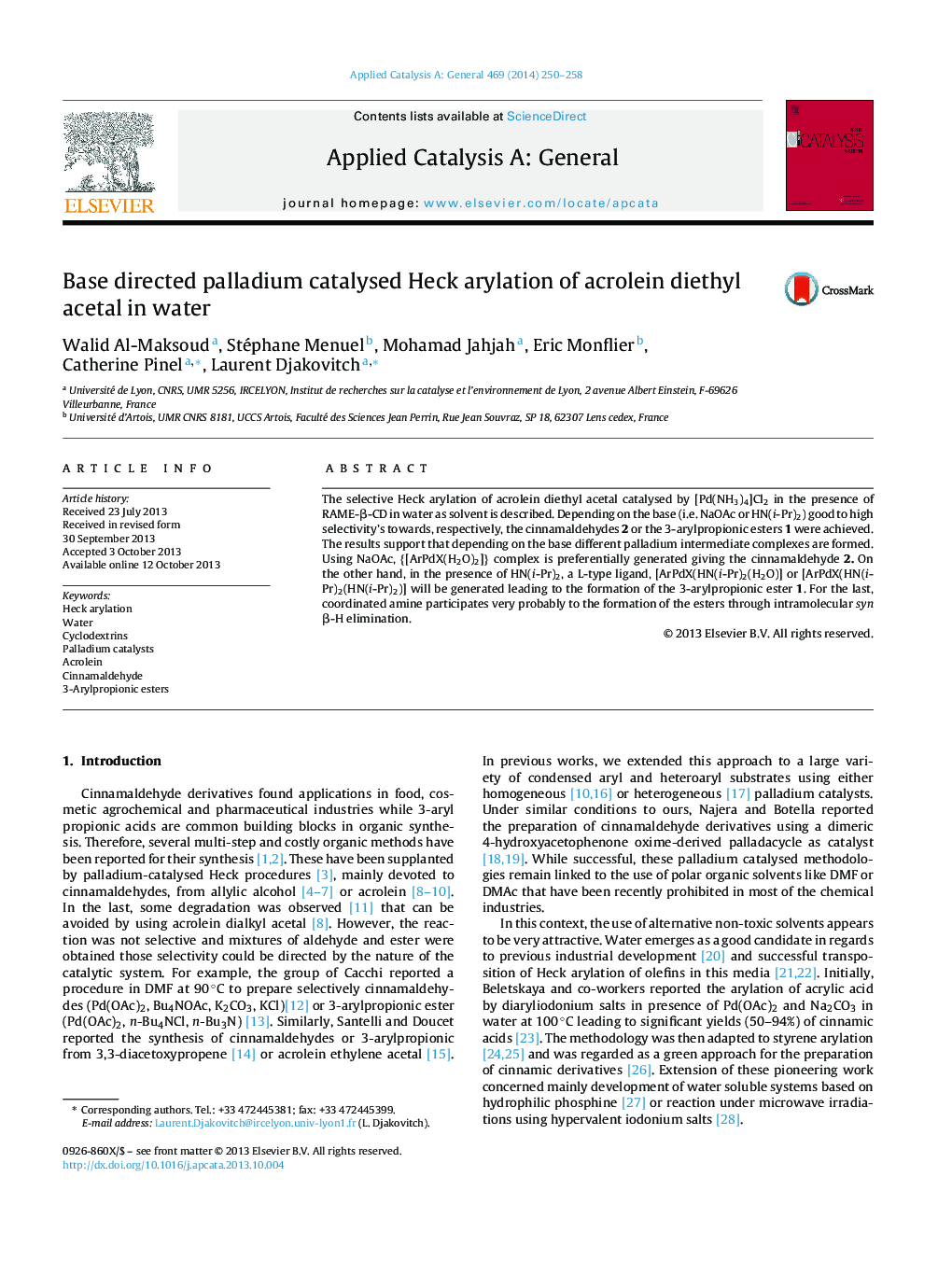| کد مقاله | کد نشریه | سال انتشار | مقاله انگلیسی | نسخه تمام متن |
|---|---|---|---|---|
| 40174 | 45845 | 2014 | 9 صفحه PDF | دانلود رایگان |
• Heck arylation of acrolein diethylacetal to aldehydes or acids in water media.
• Selectivity is controlled through the nature of the base.
• Cinnamaldehydes are obtained in the presence of sodium acetate.
• 3-Arylpropionic acids are obtained in the presence of diisopropylamine.
• The use of RAME-β-CD as mass transfer additive allowed increasing the reaction rate.
The selective Heck arylation of acrolein diethyl acetal catalysed by [Pd(NH3)4]Cl2 in the presence of RAME-β-CD in water as solvent is described. Depending on the base (i.e. NaOAc or HN(i-Pr)2) good to high selectivity's towards, respectively, the cinnamaldehydes 2 or the 3-arylpropionic esters 1 were achieved. The results support that depending on the base different palladium intermediate complexes are formed. Using NaOAc, {[ArPdX(H2O)2]} complex is preferentially generated giving the cinnamaldehyde 2. On the other hand, in the presence of HN(i-Pr)2, a L-type ligand, [ArPdX(HN(i-Pr)2(H2O)] or [ArPdX(HN(i-Pr)2(HN(i-Pr)2)] will be generated leading to the formation of the 3-arylpropionic ester 1. For the last, coordinated amine participates very probably to the formation of the esters through intramolecular syn β-H elimination.
Figure optionsDownload high-quality image (97 K)Download as PowerPoint slide
Journal: Applied Catalysis A: General - Volume 469, 17 January 2014, Pages 250–258
